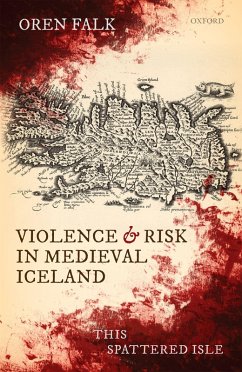Historians spend a lot of time thinking about violence: bloodshed and feats of heroism punctuate practically every narration of the past. Yet historians have been slow to subject 'violence' itself to conceptual analysis. What aspects of the past do we designate violent? To what methodological assumptions do we commit ourselves when we employ this term? How may we approach the category 'violence' in a specifically historical way, and what is it that we explain when we write its history? Astonishingly, such questions are seldom even voiced, much less debated, in the historical literature. Violence and Risk in Medieval Iceland: This Spattered Isle lays out a cultural history model for understanding violence. Using interdisciplinary tools, it argues that violence is a positively constructed asset, deployed along three principal axes - power, signification, and risk. Analysing violence in instrumental terms, as an attempt to coerce others, focuses on power. Analysing it in symbolic terms, as an attempt to communicate meanings, focuses on signification. Finally, analysing it in cognitive terms, as an attempt to exercise agency despite imperfect control over circumstances, focuses on risk. Violence and Risk in Medieval Iceland explores a place and time notorious for its rampant violence. Iceland's famous sagas hold treasure troves of circumstantial data, ideally suited for past-tense ethnography, yet demand that the reader come up with subtle and innovative methodologies for recovering histories from their stories. The sagas throw into sharp relief the kinds of analytic insights we obtain through cultural interpretation, offering lessons that apply to other epochs too.
Dieser Download kann aus rechtlichen Gründen nur mit Rechnungsadresse in A, B, BG, CY, CZ, D, DK, EW, E, FIN, F, GR, HR, H, IRL, I, LT, L, LR, M, NL, PL, P, R, S, SLO, SK ausgeliefert werden.

